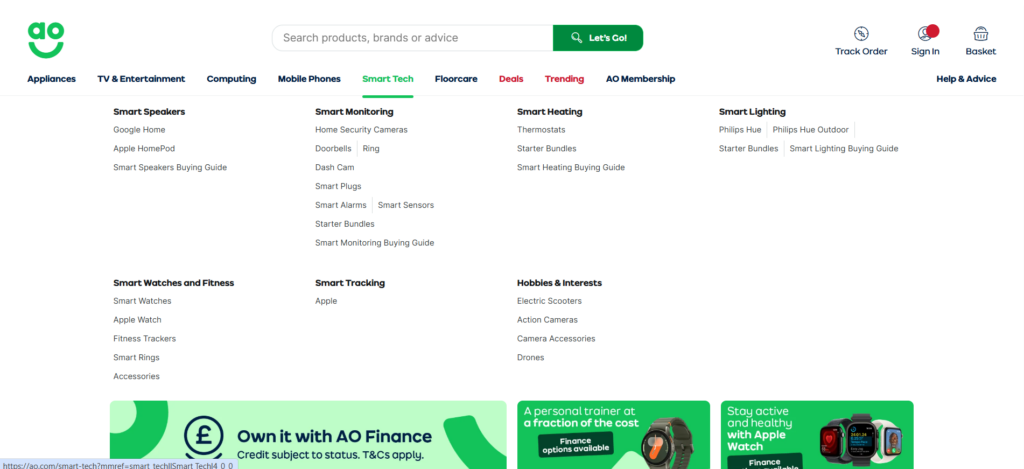From helping customers find the perfect item to streamlining back-end processes, rich and accurate product data drives success at every level. But are you truly maximizing your product data’s potential? Enriching your product data helps you stand out in saturated markets, improving everything from your customer experience to your SEO rankings.
This blog will share the 10 tips for e-commerce product data enrichment, giving you the tools to transform your store into a seamless, shopper-friendly experience.
Why Does Product Data Enrichment Matter?
E-commerce thrives on clarity. Product data enrichment can boost sales by offering precise, engaging, and contextual product information that lets customers make confident purchasing decisions. It eliminates guesswork for shoppers, enhances search performance, and, when done right, reduces cart abandonment. Clean and enriched product data for back-office teams ensures smoother inventory management and streamlined processes.
Simply put, enriching your product data is a win-win for both businesses and customers.
1. Start with Clear Product Categorization
Accurate categorization is the cornerstone of enriched product data and plays a crucial role in creating a seamless shopping experience. When products are grouped logically and assigned to the proper categories, customers can easily navigate your website to find exactly what they want. This not only enhances the user experience but also increases the likelihood of conversions, as customers are less likely to abandon their search in frustration. Proper categorization also improves the effectiveness of search filters, making it simpler for shoppers to narrow down options based on their preferences. Additionally, well-organized product data boosts SEO performance by ensuring that search engines can accurately index your pages, driving more organic traffic to your site. In short, logical categorization isn’t just about organization—it’s a key driver of customer satisfaction, sales, and overall business success.

How to Do It:
➜ Use a Hierarchy: Start with broad categories and narrow them down. For example, “Smart Tech > Smart Speakers > Google Home.”
➜ Consistent Naming Conventions: Avoid unclear labels. Be specific and uniform, like “Google Home Smart Speaker” instead of “Smart Speaker GH.”
➜ Add Tags or Attributes: Use metadata like brand, features, or compatibility to enhance search and filtering for customers.
2. Create Concrete, Engaging Descriptions
Bland product descriptions can easily cost you a sale, as they fail to capture the attention of potential customers or provide the information they need to make a confident purchase. Customers rely on detailed, engaging, and well-written descriptions to understand a product’s features, benefits, and value. Without clear and compelling details, they may feel unsure or lose interest, leading them to look elsewhere. A great product description not only informs but also inspires trust and excitement, helping customers visualize how the product will meet their needs or solve their problems. Investing time crafting powerful descriptions can make all the difference in boosting conversions and driving sales.

How to Do It:
➜ Focus on Benefits: Don’t just describe the product’s features. Explain how it can add value or solve a problem for customers.
➜ Keyword Optimization: Easily integrate relevant keywords to boost SEO rankings without sounding robotic.
➜ Use Storytelling: For example, “This insulated stainless-steel water bottle keeps your coffee hot during long meetings or your water icy cold while hitting the trails.”
💡 Pro Tip: Incorporate customer reviews, as social proof boosts trust.
3. Don’t Skimp on Visuals
High-quality product images play a crucial role in data enrichment, helping to create a better shopping experience for consumers. Clear, attractive, and relevant images grab attention and build trust, showing customers exactly what they can expect from a product. They provide the visual context that words alone cannot convey, helping potential buyers make more confident purchasing decisions. In fact, online stores that invest in professional, detailed images often see higher engagement and conversion rates. From showcasing product features to highlighting different angles or uses, great images can transform the way consumers interact with your online store, ultimately leading to greater customer satisfaction and loyalty.
What Makes Good Product Visuals?
➜ Multiple Angles: Give customers a 360-degree view of the product.
➜ Lifestyle Images: Show the product in use to help shoppers visualize how it fits into their lives.
➜ High Resolution: Reduce image pixelation and ensure details are visible.
💡 Pro Tip: Consider adding short videos or GIFs demonstrating functionality or key features.
4. Ensure Metadata is Accurate and Complete
Metadata is crucial in simplifying search and retrieval for customers and search engines. It bridges your content and users, providing essential information that helps search engines understand and rank your pages effectively. Well-optimized metadata, such as titles, descriptions, and tags, improves your website’s SEO performance and ensures that your products or content appear in relevant search queries. For customers, metadata enhances the search experience by making it easier to find exactly what they’re looking for, whether it’s a product, service, or piece of content. By prioritizing metadata optimization, businesses can increase their visibility, attract the right audience, and drive more traffic and conversions.
Key Elements of Metadata:
➜ Title Tags: Include detailed keywords focused on the shopper’s search intent.
➜ Descriptions: Brief but rich summaries of what the product offers.
➜ Tags: Use descriptive tags for product categories like “eco-friendly,” “handmade,” or “organic.”
💡 Pro Tip: Regularly review metadata to ensure it aligns with current SEO trends and inventory updates.
5. Enhance Product Attributes
Attributes such as size, material, color, weight, and dimensions are necessary to refine search filters and enhance online shoppers’ navigation. These product details act as key indicators, helping customers narrow down their choices quickly and efficiently. Providing clear and descriptive attributes makes it easier for potential buyers to find exactly what they’re looking for, saving them time and effort.
Why Attributes Matter:
➜ Enable precise search results.
➜ Create smoother filtering systems.
➜ Simplify product comparisons for customers.
💡 Pro Tip: Align your attributes with your most common FAQs. For instance, if your customers consistently ask about dimensions, highlight this in your product pages.
6. Integrate Recommendations for Up-selling and Cross-Selling
Leverage enriched customer data to recommend related or complementary products that align with their preferences and purchase history. By offering tailored suggestions, you can effectively implement up-selling and cross-selling strategies that boost your revenue and provide a more personalized shopping experience. For instance, suggesting a protective case when a customer buys a smartphone or offering a discount on a matching accessory can encourage additional purchases. These approaches not only increase the average order value but also demonstrate an understanding of your customers’ needs, fostering loyalty and trust. A well-executed up-selling or cross-selling strategy ensures that customers feel valued and supported, ultimately enhancing their overall experience with your brand.

Examples:
➜ Cross-Sell: Suggest AirPods on the product page for a MacBook.
➜ Up-sell: Highlight a higher-end MacBook model as an alternative.
💡 Pro Tip: Use AI-powered tools to personalize recommendations based on browsing and purchase history.
7. Leverage Customer Reviews and Ratings
Customer-generated content, including reviews, photos, and testimonials, adds significant value to your product data by offering authentic, firsthand insights from real users. These contributions give potential buyers honest perspectives on the product’s quality and performance, and help build trust and credibility for your brand. From detailed reviews highlighting a product’s strengths (or areas for improvement) to photos showing how it looks or functions in real life, this content allows customers to make more informed purchasing decisions. Incorporating user-generated content (UGC) into your marketing strategy can also enhance engagement, improve search engine rankings, and create a sense of community around your brand.
Benefits of Reviews:
➜ Improve authenticity and credibility.
➜ Highlights key product features or potential concerns.
➜ Reduces purchase anxiety.
💡 Pro Tip: Prompt your customers to leave reviews post-purchase. Incentives like discounts for their next purchase can drastically improve response rates.
8. Streamline Data Accuracy with Automation
Manual updates take up valuable time and increase the likelihood of human error, leading to inconsistencies in your product data. These errors can create confusion, disrupt workflows, and impact the accuracy of your business operations. By automating your product data management processes, you can ensure data consistency, streamline operations, and save significant labor hours. Moreover, automation also allows your team to focus on more strategic tasks rather than repetitive data entry, improving overall efficiency and accuracy. Leveraging automated tools ensures your product data is always up-to-date, reliable, and aligned with your business needs.
Tools to Use:
➜ Product Information Management (PIM) software like Icecat PIM.
➜ AI-integrated platforms that map attributes or auto-correct errors.
➜ Cloud-based systems for centralized data access.
💡 Pro Tip: Schedule regular data validation to flag and fix inaccuracies.
9. Monitor Customer Interaction with Analytics
You can’t improve what you don’t measure. Understanding how customers interact with your product pages is crucial for identifying opportunities to optimize their experience and increase conversions. By tracking key metrics such as click-through rates, time spent on the page, bounce rates, and completed actions, you gain valuable insights into what aspects of your product pages work effectively and which areas may need improvement. This data enables you to make informed decisions, refine your design, adjust your content, and test new strategies to meet customer needs better. In the competitive world of online sales, measuring these interactions is the first step towards creating a seamless and practical user experience that drives results.
Metrics to Focus On:
➜ Click-Through Rates (CTR): Are visitors engaging with your product titles or images?
➜ Bounce Rates: Monitor pages where customers exit without action.
➜ Time Spent on Product Pages: The longer they stay, the more informative your product data likely is.
💡 Pro Tip: Use analytic insights to A/B test product descriptions or categorization methods.
10. Audit and Enrich Continuously
Product data enrichment is an ongoing process, not a one-time task. As your inventory grows and industry trends shift, it’s crucial to ensure your product catalog remains accurate, up-to-date, and user-friendly. Regular audits are key to identifying outdated, incomplete, or incorrect information that can impact customer experience and operational efficiency. By consistently reviewing and optimizing your product data, you can maintain a competitive edge, improve searchability, and ensure customers find the correct information to make informed purchasing decisions. A well-maintained product catalog is essential for building trust, driving sales, and adapting to changes in the market.
Steps for Continuous Improvement:
➜ Update descriptions and images for new trends.
➜ Monitor customer feedback for standard requests and pain points.
➜ Evaluate enriched data’s impact on conversions to refine strategies.
💡 Pro Tip: Set a quarterly data enrichment schedule to stay proactive.
Take Your Product Data to the Next Level with Icecat
Ready to simplify your product data enrichment and boost your e-commerce performance? Get instant access to high-quality, standardized product data, automated updates, and seamless integrations—so you can save time, enhance customer experiences, and stay ahead of the competition. Don’t let outdated product information hold you back. Contact us now and transform your product catalog with Icecat!
My is a Digital Marketer who aligns product strategies with customer needs, driving impactful campaigns and business growth.



